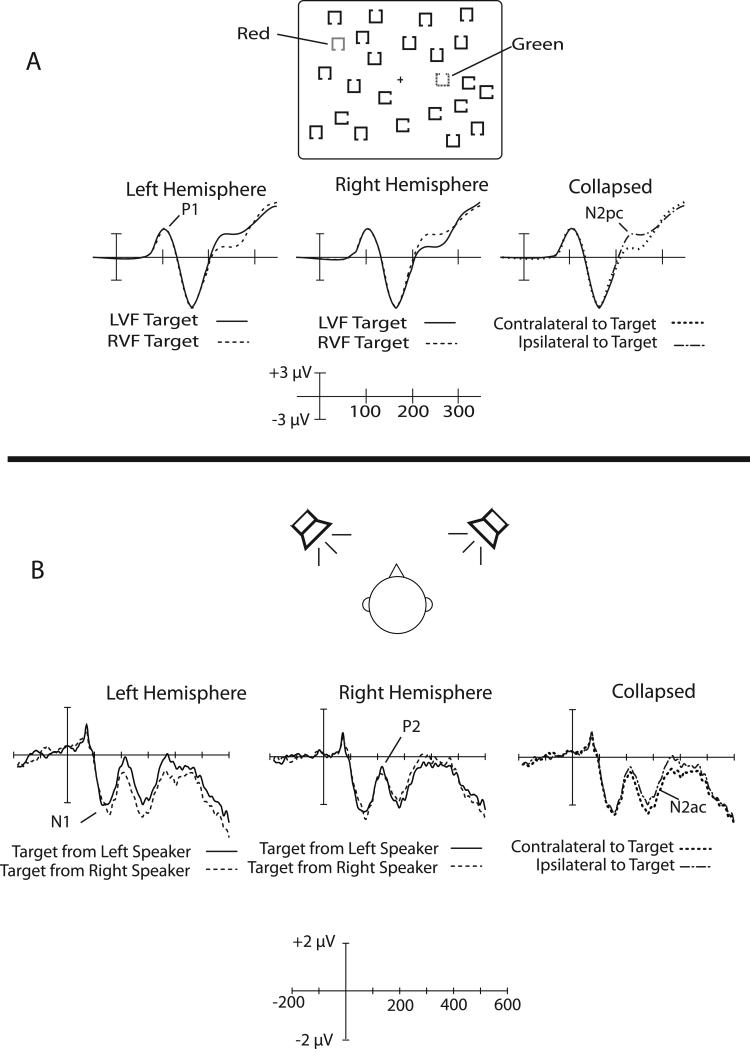Figure 1.
A) Typical N2pc paradigm and results. With the stimuli shown here, subjects would be instructed either to detect the presence of a specific color (e.g., the color red) or to discriminate a feature of the object drawn in that color (e.g., the position of the gap on the red square). For either of these instructions, an N2pc component is observed contralateral to the item of the attended color. That is, the voltage is more negative when the attended item is contralateral to the electrode site compared to when it is ipsilateral. Eye movements are not permitted, so the N2pc reflects a covert shift of attention rather than an overt shift of gaze. B) Translation of the visual N2pc paradigm to an analogous auditory paradigm. In the auditory paradigm, pairs of stimuli were presented simultaneously, with one sound from each speaker, and subjects listened for a specific target sound that could occur in either speaker. The waveforms shown here are grand averages over the anterior cluster of electrode sites (F3, F7, C3, T7, F4, F8, C4, T8). For visual clarity, these waveforms were filtered offline with a low-pass Gaussian filter with a half-amplitude cutoff at 50 Hz.

